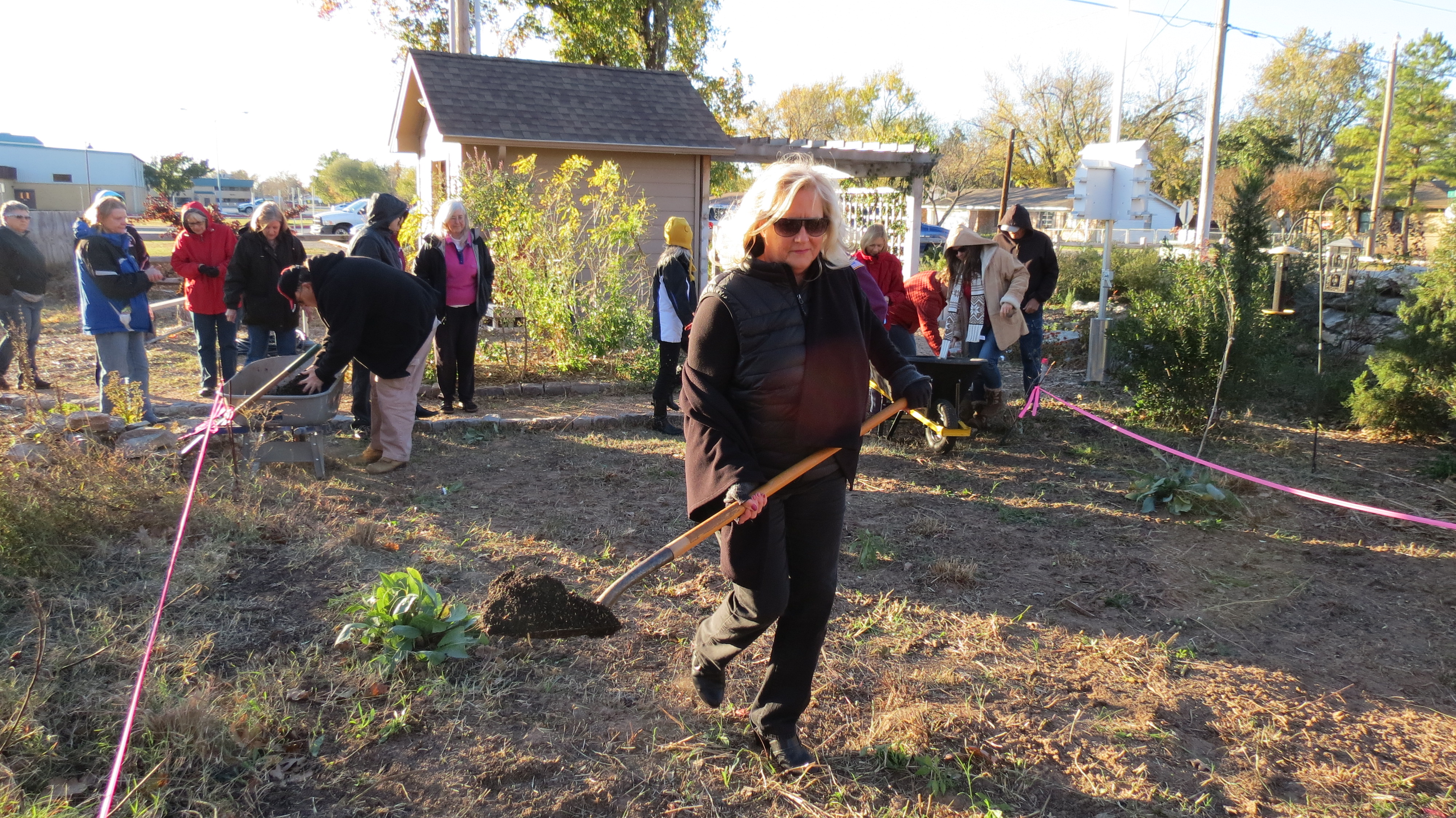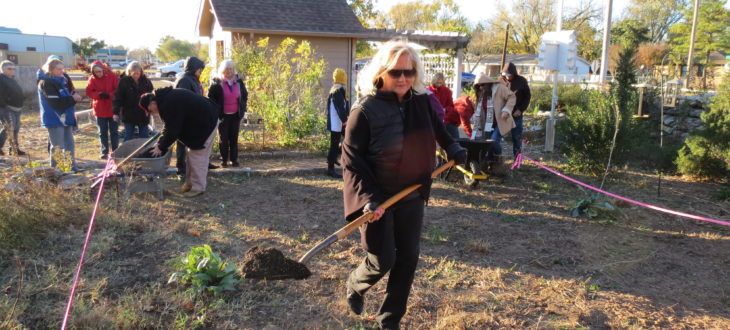
MARY WALLER
Director Emeritus of the Oklahoma Monarch and Pollinator Collaborative
Many parts of Oklahoma experienced the state’s first freezing temperatures during the second week of November. Hard freezes signal a time for gardeners to think about bedding down their pollinators plants for the winter and be ahead of the game for spring.
From the patio-scape planter-gardener to those who tend to many hundreds of stems in their backyard, courtyard, business landscaping, churchyard or school campus, seasoned plant and insect experts note that late-fall feats can help or hurt your native botanicals over-winter better (and the wildlife that uses them).
Perennial plants evolved to grow back year after year, and winter is a part of their lifecycle. Just like bears, perennials go into hibernation and “wake up” in the spring re-energized! Each perennial species is unique and the cold may impact each one in a different way, but for Oklahoma recommendations, we will stick to the basics: watering, cutting, seed collecting, mulching and moving. If you have questions about a particular plant, we recommend touching base with your local chapter of Master Gardeners and/or your County Extension Office.
First, ask yourself if you are the type to “let nature do her thing” or are of the persuasion that you have to “tidy up.”
Wild Over Winter
If you are the former, that’s great! The majority of folks in the wildlife profession suggest letting your garden or small- to mid-sized field rest for the winter months with little disturbance. Dried plants and grasses create “cover” not only for the seeds or bulbs in the soil, but also offer a sheltering habitat for countless birds and other small critters. If you are in this “wild over winter” camp, only pull out non-native plants that you don’t want to self-propagate.
Leave up tall stalks, like forbs or sunflowers, for foraging birds or sunflowers for cavity-nesting bugs to take advantage of. The stems add protection and help hold mulch and insulating snow cover in place. If you find them unsightly, pull them out of the ground and re-insert them into a less visible spot in your garden.
When in doubt, leave the leaves. Not only do they eventually add an organic compost to your garden soil, they also provide insulation for butterflies and moths that pupate in the soil, just under the leaf litter.
Visions of Meadows Dancing in your Head
If you have a larger parcel of land you hope to convert to (or add) native pollinator prairie plants, this is a great time to give thought to a planned mow, prescribed burn, or removing troublesome invasive species. For questions about planning for bigger plots, feel free to reach out to the Okies for Monarch’s team to be connected to an expert about your particular ecoregion, best practice timing or meadow-friendly goals.
Just Can’t Stay Out of the Garden?
Some folks like to get a head start of spring with a bit more “tidying up” in the flower beds and garden. That’s okay, too. Enjoying your yard or garden in the fall and winter is not only healthy for you, but a great time to divide plants or spot over-wintering birds! If you must don the gardening gloves, simply give some care to efforts that best benefit your plants and the less visible species that might be using that habitat during the cold months.
While you are out there, November is a terrific time to add bulbs like daffodils and tulips that will provide nectar and pollen for pollinators in early spring. This is also a fine time to sow native milkweed or other wildflower seeds with a nice cozy cover layer of soil and organic matter.

Volunteers prepare a pollinator garden in late fall for seeding.
More Tips for Post-Freeze Garden Prep
- Avoid late nutrient additives, as they stimulate new growth and interfere with cold tolerance.
- Water perennials only until the ground freezes. Overly wet winter soil causes multiple problems, including root rot.
- Check plants for fungus or mildew. These are good candidates to remove now.
- If you must remove leaf litter, consider shredding it and adding to a composting bin or area of your property in need of more mulch.
- Move potted perennials into a shed, garage or sunroom. Or, put them into the ground and try new plants in those pots next spring.
- And a general house-keeping note, when working with plants, especially milkweed, cleaning your tools is an age-old best practice. Wipe the pruning shears with a cloth soaked in rubbing alcohol to disinfect them before any pruning, and then wipe them again when moving between plants. Wear heavy gloves to protect your hands from the milkweed’s sap, which can cause skin irritation.
Whether wild or well-tended over winter, a garden can be a joy for you and a bonus to the biological wonders that reside there.
And, a mindful gardener that beds-down his or her native plants with little or no interference, can snuggle up for the winter knowing that they are helping many hibernating Oklahoma species, as well as all the pollinators and Monarchs, that will return next spring.
MARY WALLER is the Director of the Oklahoma Monarch and Pollinators Collaborative. She is a 20-year-veteran communications consultant, writer and gardener. She extends a big thanks to Ray Moranz, pollinator ecologist for the Xerces Society, for his input on this article for Oklahoma readers.

